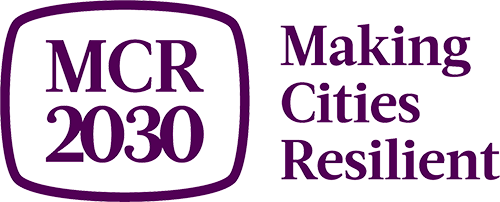Disaster Resilience Scorecard for Cities
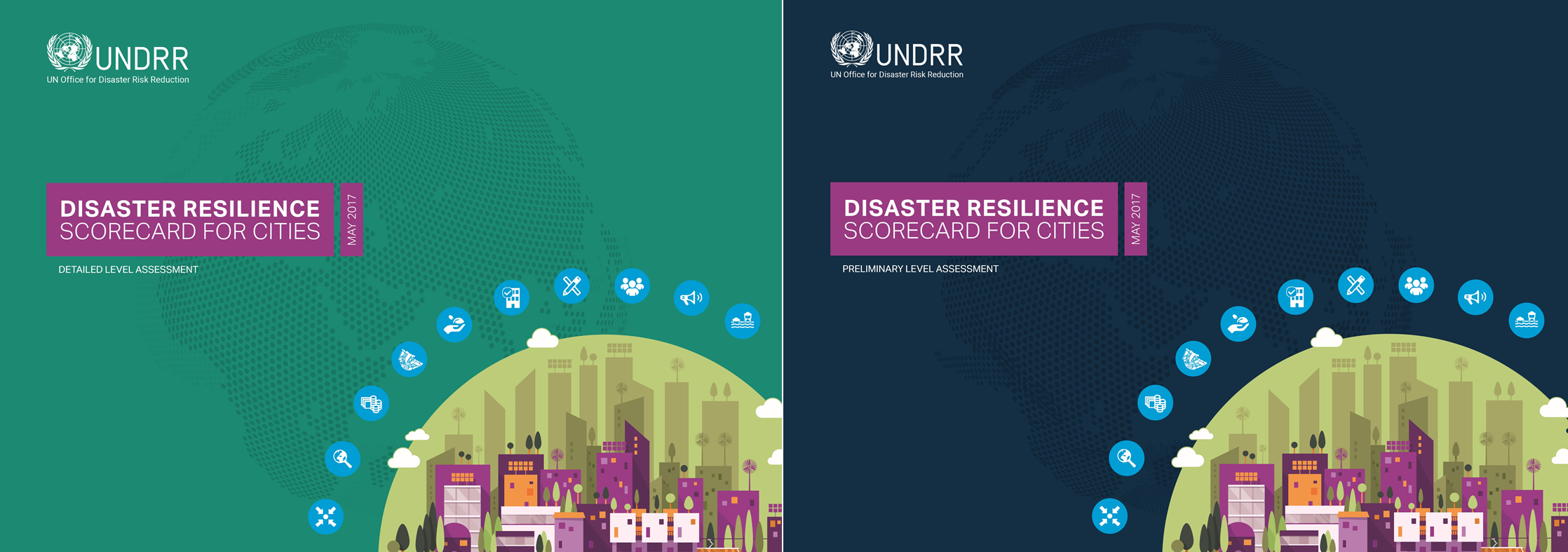
A tool for disaster resilience planning
The Disaster Resilience Scorecard for Cities or the Scorecard was published in 2017 at the Global Platform for Disaster Risk Reduction in Cancun, Mexico. It was developed by United Nations Office for Disaster Risk Reduction (UNDRR) with the support of USAID, European Commission, IBM, AECOM and other partners and cities participating in the Making Cities Resilient Campaign 2010-2020.
The Scorecard provides a set of assessments that allow local governments to assess their disaster resilience, structuring around UNDRR’s Ten Essentials for Making Cities Resilient. It also helps to monitor and review progress and challenges in the implementation of the Sendai Framework for Disaster Risk Reduction: 2015-2030 and supports the baseline analysis for preparation of the disaster risk reduction and resilience strategies.
The Scorecard offers the potential for scoring at two levels:
- Level 1: Preliminary level, responding to key Sendai Framework targets and indicators, and with some critical sub-questions. This approach is suggested for use in a 1 to 2 day city multi-stakeholder workshop. In total, there are 47 questions indicators, each with a 0–3 score;
- Level 2: Detailed assessment. This approach is a multi-stakeholder exercise that may take 1–4 months and can be a basis for a detailed city resilience action plan. The detailed assessment includes 117 indicator criteria, each with a score of 0–5.
Local authorities may consider using first the preliminary level Scorecard to initiate dialogues with the various departments and stakeholders on the issues related to disaster risk reduction and resilience. Based on the result of the preliminary scorecard assessment, local governments may consider completing the full detailed scorecard assessment or focusing on a number of key essentials that may require special attention.
While the Scorecard can be used as a standalone tool, it does require you to consider your city’s hazards and risks. Specifically, the Scorecard prompts you to identify “most probable” and “most severe” risk scenarios for each of your identified city hazards, or for a potential multi-hazard event.
In considering risk, you may find the Quick Risk Estimation tool (QRE) developed by UNDRR and Deloitte helpful.
To familiarize yourself with the information required for the assessments, please refer to the “Reference Note on required data/information: Disaster Resilience Scorecard for Cities"
The Scorecard is available in different file formats:
- The PDF version contains assessment details in a printing-friendly format.
- The excel tool is the most comprehensive version. As you conduct the assessment, you can also take note of the assessment rationale and provide proof for verification. The excel tool can produce the pictograms showing the results of analysis at the end which are highly useful for planning and decision making. It is a highly recommended version for use.
- The online version replicates the excel tool but allows multiple users to complete the assessment at the same time (Discontinued in November 2023).
Thematic Scorecard Addenda and Annexes:
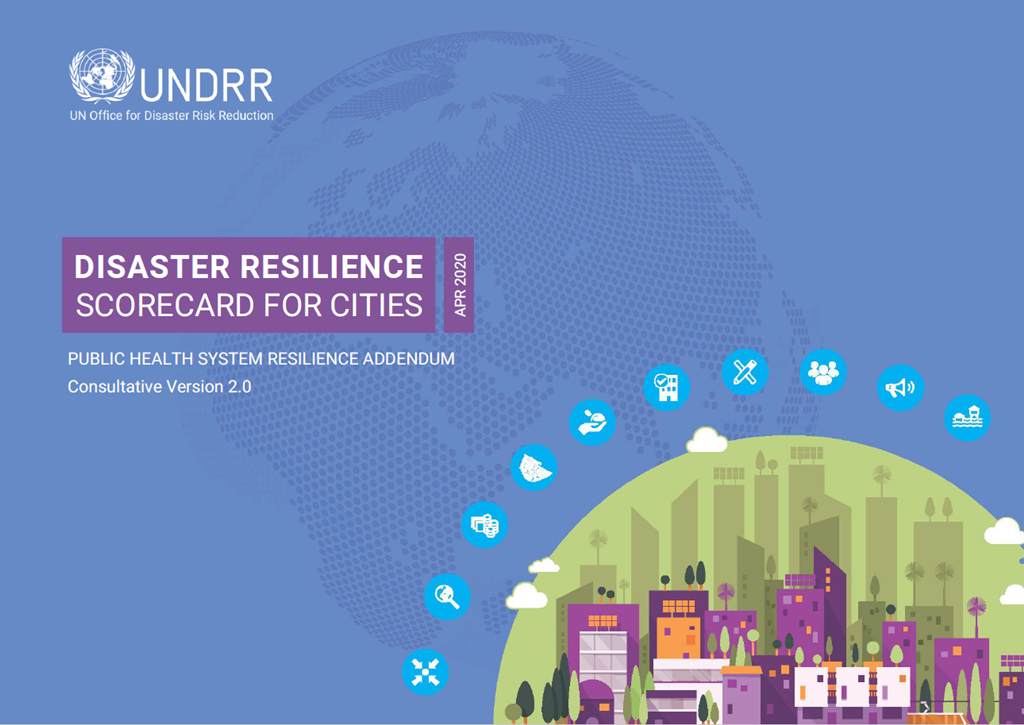
- Public health scorecard addendum strengthens and integrates coverage of the many aspects of public health that are relevant to disaster planning, mitigation and response, helping to ensure of the integration of public health issues in disaster risk management.
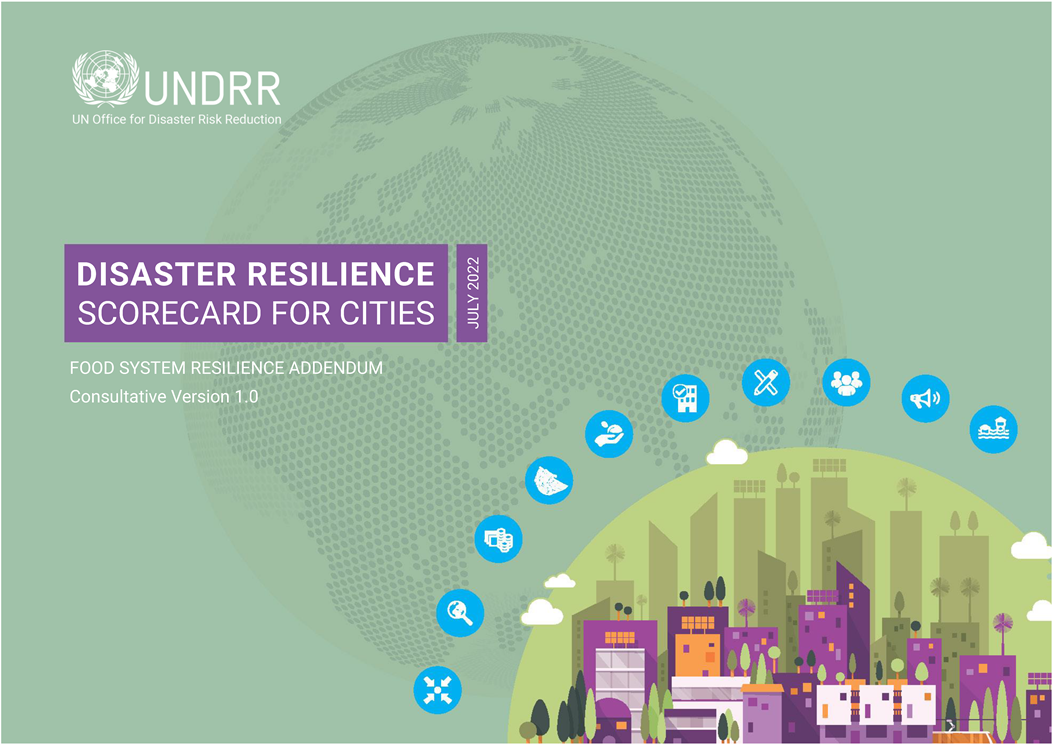
- Food System Resilience addendum is structured in sections around the same “Ten Essentials for Making Cities Resilient” as the Scorecard. The Ten Essentials provide a holistic coverage of the many issues that affect resilience in the “system-of-systems”, which make up a system. This includes food production, supplies, transport and services.
- This Cultural Heritage Addendum to the Disaster Resilience Scorecard for Cities aims to support the development of culture-based and people-centered disaster risk reduction and resilience strategies integrated with cultural heritage and development policies.
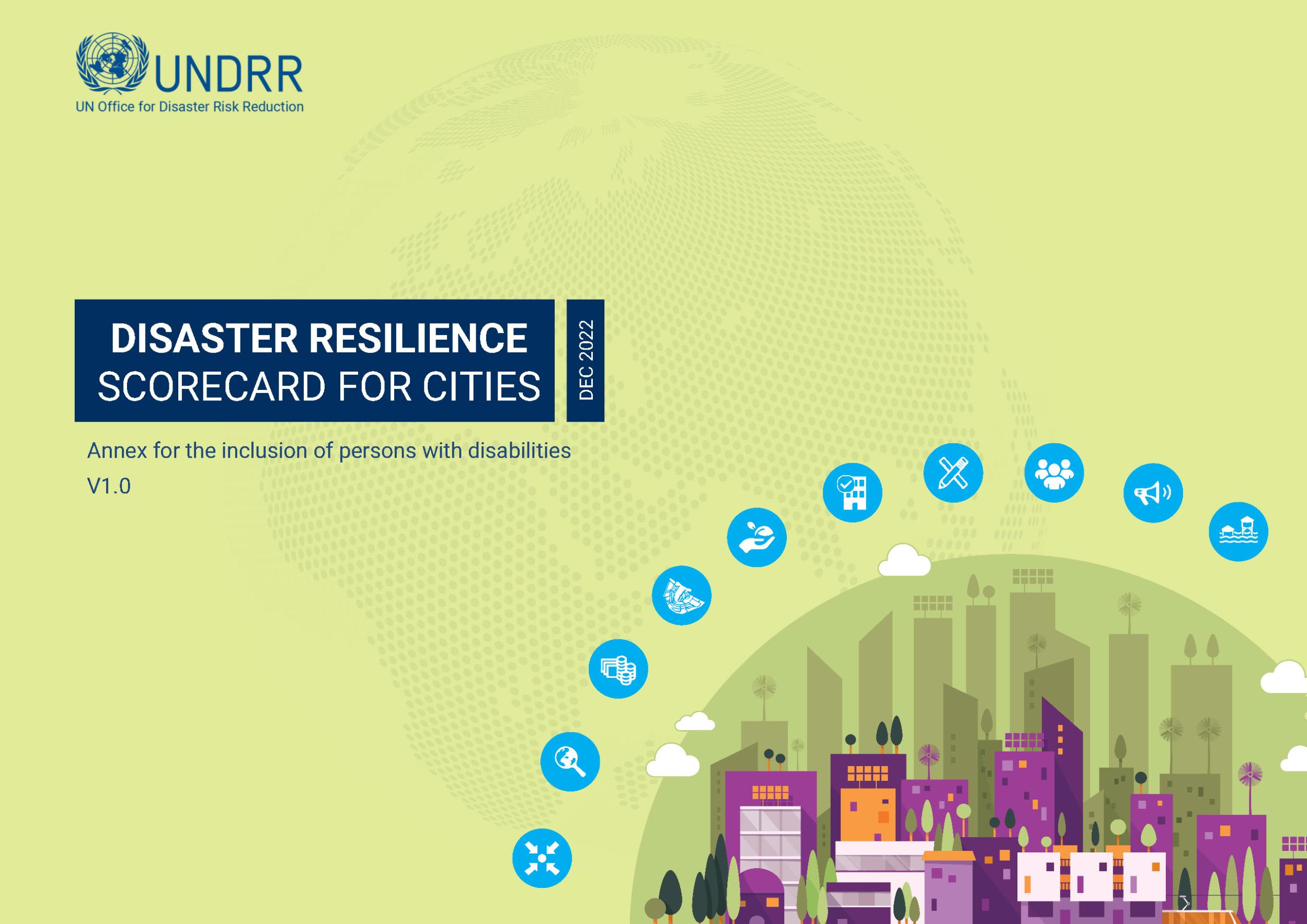
- Annex for the Inclusion of Persons with Disabilities includes specific criteria on considerations for the inclusion of persons with disabilities for each of the Ten Essentials for Making Cities Resilient. It seeks to support the formulation of local strategies and plans for enhancing more resilient and inclusive cities, together with two crosscutting principles, close consultation with and active involvement of persons with disabilities through their representative organizations and accessibility. It aims to promote inclusion and accessibility in the urban environment, so that no person with a disability be left behind.
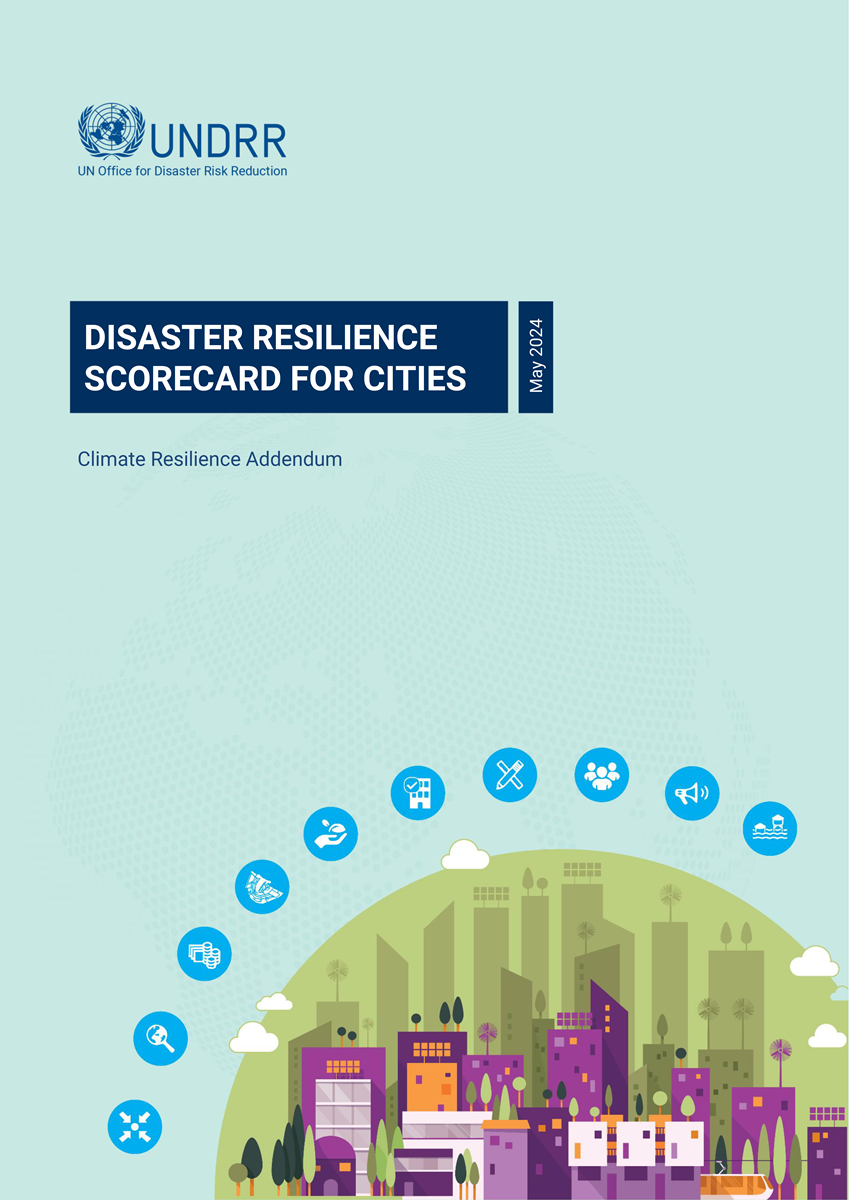
- The Climate Resilience Addendum allows users to self-assess the interlinkage and integration of disaster risk reduction and climate change adaptation at the sub-national government level strategies and practices. Originally developed in Spanish through a collaboration of the Development Bank of Latin America and the Caribbean (CAF) and UNDRR, this version integrates feedback from city pilots and consultative review.
Other Scorecards by ARISE – the UN Private Sector Alliance for Disaster Resilience Society
- Disaster Resilience Scorecard for Industrial and Commercial Buildings (Building Scorecard)enables the establishment of a baseline for the resilience of buildings and campuses to natural or man-made disasters, so allowing improvements to be identified and prioritized. It is intended for use by the owners, managers and operators of commercial, industrial and multi-residential buildings or campuses, both government and privately-owned. The Building Scorecard has been created by a team of volunteers led by ARISE - the UN Private Sector Alliance for Disaster Resilient Societies.
- The Wildfire Disaster Risk Reduction scorecard is designed to help communities improve their ability to assess the risk from, prepare for, manage and recover from wildfires. It is modeled on UNDRR Disaster Resilience Scorecard for Cities and embodies the Ten Essentials of Making Cities Resilient. Developed by ARISE-US and CrowdDoing. The Wildfire Scorecard is issued with a spreadsheet to help with capturing scores.
- SME Scorecard - Micro, Small-to-medium sized enterprises (hereafter “SMEs”) are not adequately addressed in any of the current scorecards, including the UNDRR’s Disaster Resilience Scorecard for Cities. Most existing matrices that track private sector interactions typically merge large companies as well as SMEs as they evaluate and catalogue existing frameworks, especially public/private partnerships. This scorecard seeks to help cities create a clear evaluative mechanism to distinguish SME interaction with existing public sector disaster and emergency management agencies from private sector interactions generally (which may include SME as well as large companies). The Addendum can be used in conjunction with the UNDRR Scorecard or as a standalone. This scorecard is fast, taking only 15 minutes at the very most, and all questions are yes/no to make for quick and easy evaluation.
More information
- Reflections from Cities on the use of the Scorecard and Resilience Planning
- Report on “Making Cities Sustainable and Resilient: Lessons learned from the Disaster Resilience Scorecard assessment and Disaster Risk Reduction (DRR) action planning”
- Case studies and lessons learned from North Macedonia, Romania, and Serbia
- Chisinau Disaster Resilience and Public Health System Resilience Assessment Report: Disaster Resilience Scorecard Assessment Results
Download the Scorecard
Download the Scorecard in PDF or Excel tool format, available in various languages below:
English
- Preliminary Assessment (PDF)
- Preliminary Assessment - Accessible (PDF)
- Detailed Assessment (PDF)
- Preliminary Assessment Excel Tool
- Detailed Assessment Excel Tool
- Reference Note - Preliminary Assessment
- Reference Note - Detailed Assessment
Albanian
Arabic
- Preliminary Assessment (PDF)
- Detailed Assessment (PDF)
- Preliminary Assessment Excel Tool
- Detailed Assessment Excel Tool
Bengali
Bosnian
- Preliminary Assessment (PDF)
- Detailed Assessment (PDF)
- Preliminary Assessment Excel Tool
- Detailed Assessment Excel Tool
Burmese
Chinese
Farsi
French
- Preliminary Assessment (PDF)
- Detailed Assessment (PDF)
- Preliminary Assessment Excel Tool
- Detailed Assessment Excel Tool
German
Italian
Indonesian (Bahasa)
Korean
Mongolian
Nepali
Polish
Portuguese
- Preliminary Assessment (PDF)
- Detailed Assessment (PDF)
- Preliminary Assessment Excel Tool
- Detailed Assessment Excel Tool
- Preliminary Assessment Excel Tool (Portuguese BR)
- Detailed Assessment Excel Tool (Portuguese BR)
Romanian
- Preliminary Assessment (PDF)
- Detailed Assessment (PDF)
- Preliminary Assessment Excel Tool
- Detailed Assessment Excel Tool
Russian
- Preliminary Assessment Excel Tool
- Detailed Assessment Excel Tool
- Reference Note - Preliminary Assessment
- Reference Note - Detailed Assessment
Serbian
- Preliminary Assessment (PDF)
- Detailed Assessment (PDF)
- Preliminary Assessment Excel Tool
- Detailed Assessment Excel Tool
Spanish
- Preliminary Assessment (PDF)
- Detailed Assessment (PDF)
- Preliminary Assessment Excel Tool
- Detailed Assessment Excel Tool
